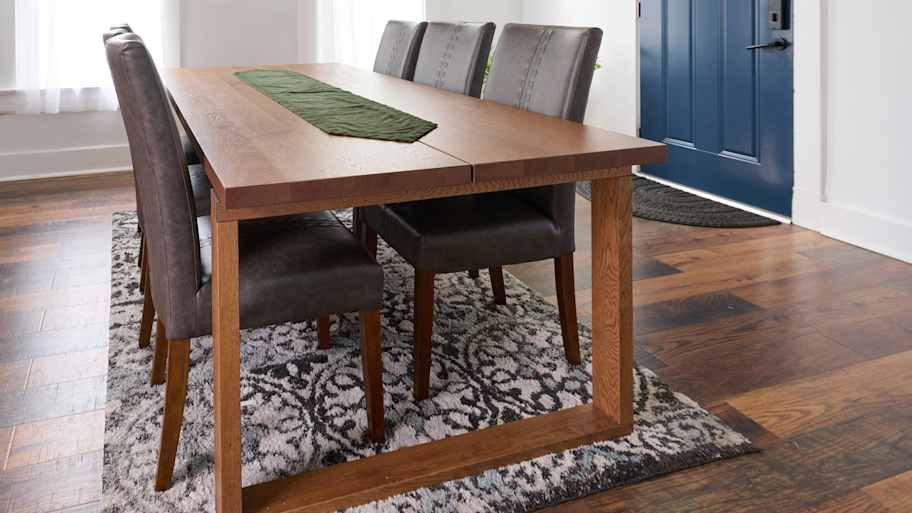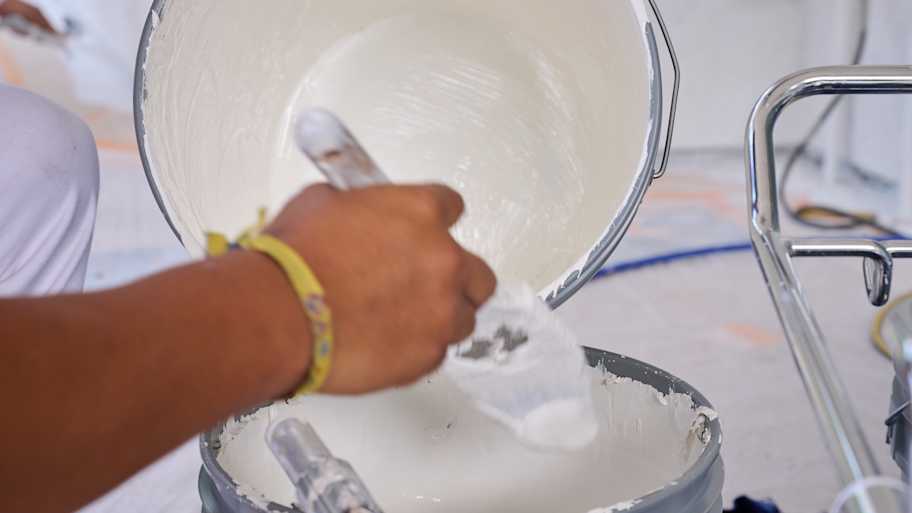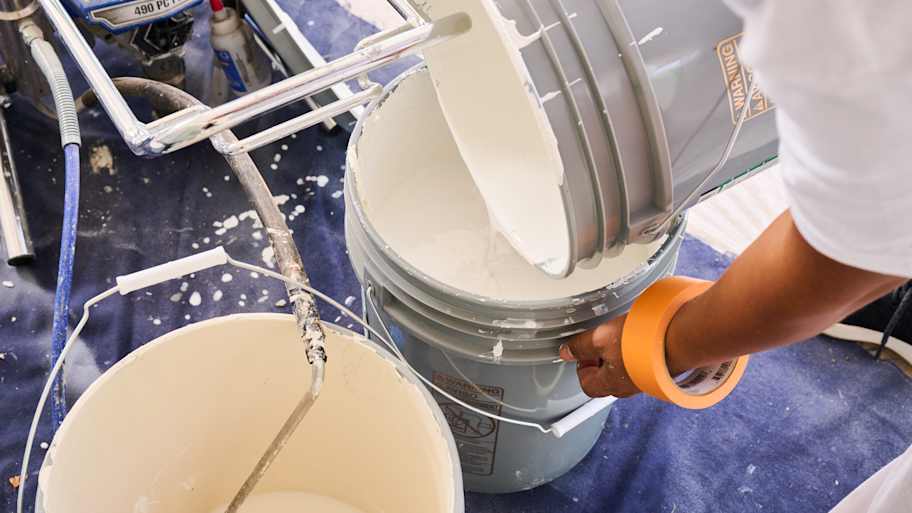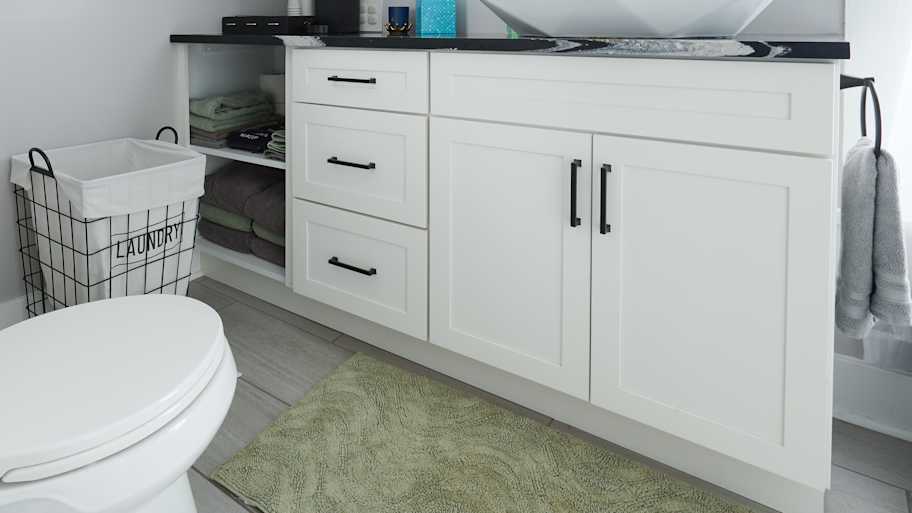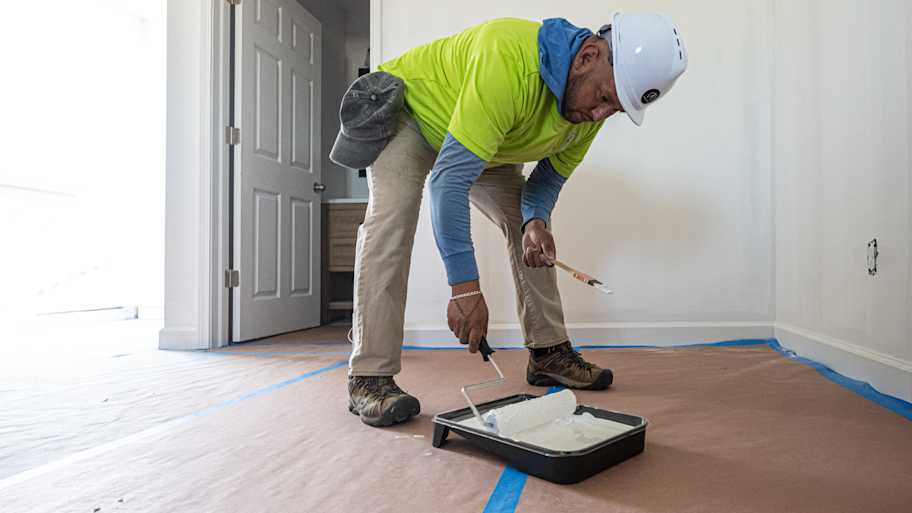How to Create a Beautiful Stencil Wall in 8 Simple Steps
Are you cut out for wall stencils? Here are top tips to guide your project


- Wall paint stencils
- Painter’s tape or spray adhesive
- 4-inch foam roller with handle
- 4-inch paint roller tray
- 1-inch angled paintbrush or sponge
- Quality paint, such as an acrylic or latex wall paint, or acrylic art paint
- Paint remover
- Foam board (to practice on)
A gorgeous stenciled accent wall can transform a space—whether it’s your bathroom, nursery, or living room. From floral designs to animals and geometric patterns, here are expert tips for how to stencil a wall that adds plenty of personality.
Choose a Simple Wall
If this is your first time with wall stencils, consider tackling a basic wall without intricacies. A good option is a wall that doesn’t have any windows or doors. Also, opt for a smaller space over an enormous wall in your family room. Stenciling around unique areas and across large spaces is doable, but takes time, care, and practice.
If you’d rather have a professional tackle your home painting project, consider hiring a local interior painter to do the job for you.
Practice on Foam Board
Get a feel for painting with a stencil before you put it on your wall.
To see if you like your color combination, paint a foam board the same color as your accent wall, then practice painting your second color on top. Set the stencil on the foam board and secure it down with painter’s tape or adhesive, then brush or roll your paint over the stencil. Move the stencil across the foam board to get a feel of how the pattern will come together on your wall.
Prepare Your Wall
Ensure you have the background wall color you want and make any touch-ups to your paint as needed. You’ll also want to remove outlet plates, switch plates, baseboards, and crown molding, or tape around them to protect them.
Find Your Starting Point
Depending on the stencil you’re using, you may want to start in the middle of the wall and build your design out from there. To find your center point, measure the width and height of your wall and mark the middle point with a pencil. Another option is to start your stencil pattern in the upper left-hand corner of the wall.
No matter where you start, use a level to straighten your stencil and ensure it’s placed evenly on the wall. Your stencil may have guides to help you align the stencil across your wall, but use a level every few stencils to ensure you’re staying in line.
Adhere Your Stencil
 Photo: Steve Gorton / Getty Images
Photo: Steve Gorton / Getty ImagesSecure your stencil to the wall with painter’s tape or spray adhesive. Keeping your stencil in place as you paint ensures your design looks sharp and precise.
Use a Minimal Amount of Paint
Too much paint can create globs, bleed under your stencil, and smear your design. Instead, use a small amount of paint when rolling or brushing it onto your stencil. Dab your roller or brush on a paper towel before painting to get excess paint off.
Use light pressure when painting back and forth to ensure full coverage and a crisp stencil pattern. Gently remove your stencil from the wall. Wipe off your stencil with a damp rag—or, even better, paint remover—if there’s excessive paint before you move it to a new spot. A clean stencil helps avoid splotches and unevenness.
When your stencil is ready, place it in the next spot, typically to the right, left, or bottom of your first stencil.
Be Flexible at the Corners and Wall Edges
The edges of your wall and corners can be tricky when stenciling. You might not be able to squeeze in a full stencil pattern at the end. Instead, focus only on the part of the wall where you’re stenciling.
You can either adhere the stencil so it fits the space with the part of the stencil draping over another area, or you can cut your stencil to fit the space. Consider using a small paintbrush in tighter areas for more precision (instead of a roller).
Many walls and ceilings can be uneven in certain spots. If you’re cutting your stencil, such as in the corner next to a door frame, start at the larger areas of the wall then move to the smaller spaces. You want to avoid ending up with a cut stencil that doesn’t reach the width or height of the area.
Give Yourself Extra Time
Stenciling a wall takes time—longer than wallpapering or painting a solid color. Depending on the size of your wall, stenciling might take a few hours or 15.
No matter how long it takes, perfection shouldn’t be your goal. Once your entire wall is finished, it’s difficult to notice small imperfections. Instead, you’ll be marveling at your masterpiece!
